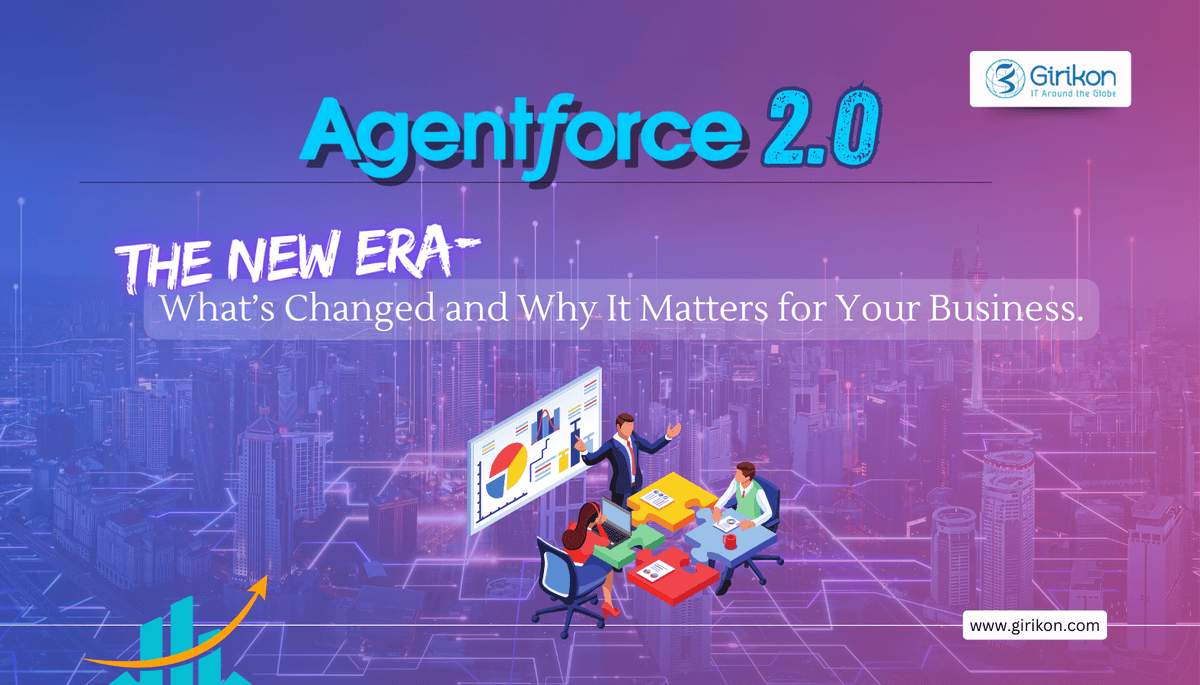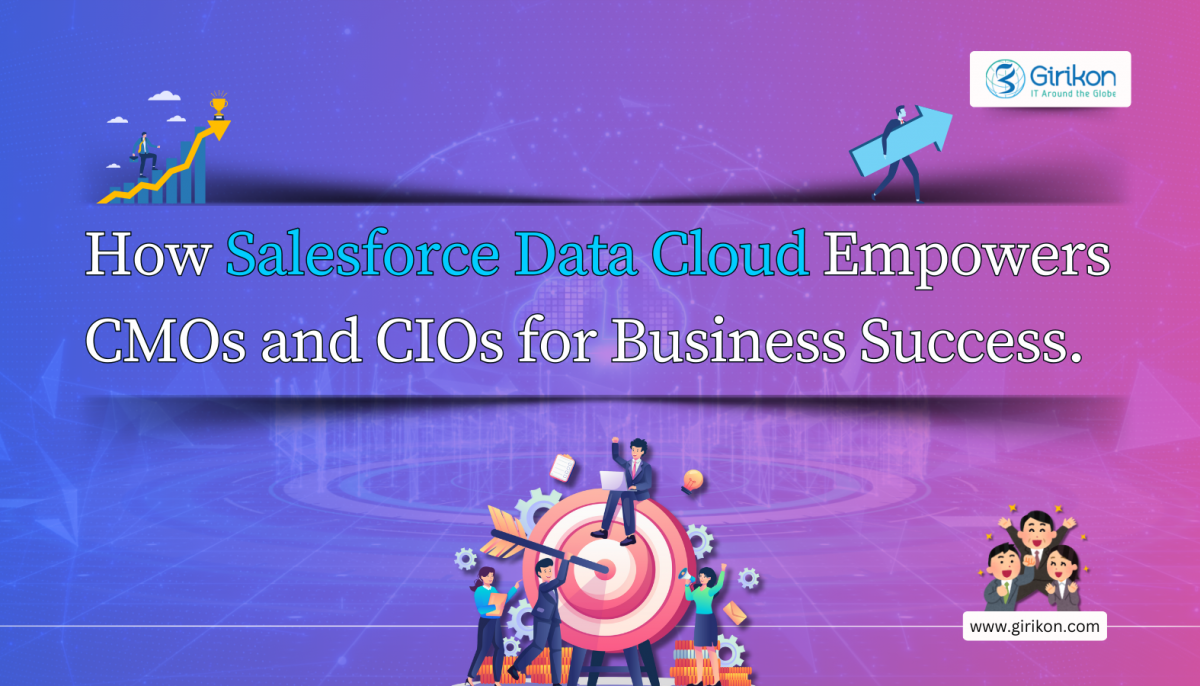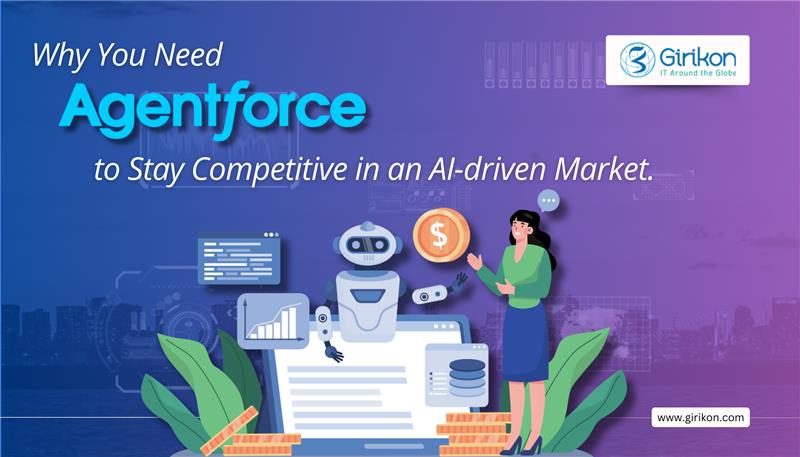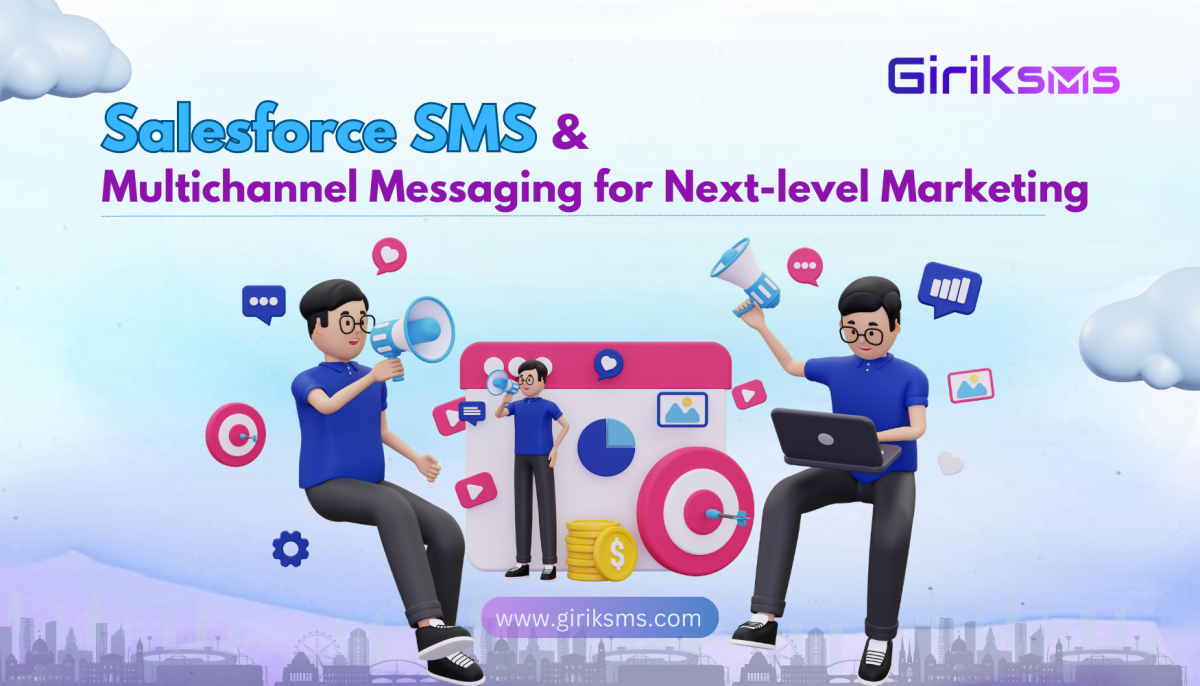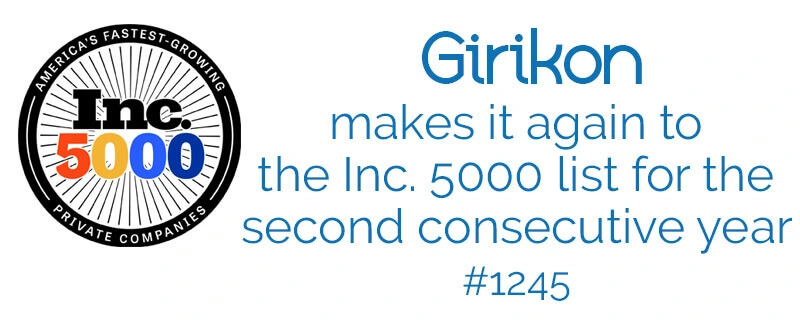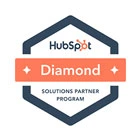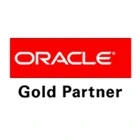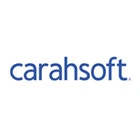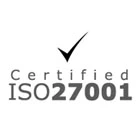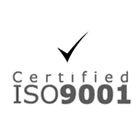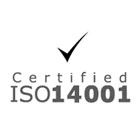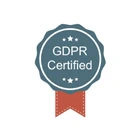All through these years, Salesforce users have been leveraging out-of-the-box operational reports, and dashboards to monitor their data, comprehend performance and share results. However, with customer data growing exponentially with every passing day, exploring data manually has become a huge challenge. To address this challenge, Salesforce has come up with its AI (Artificial intelligence) powered advanced analytics solution i.e. Salesforce Einstein Analytics.
Einstein Analytics is a next-generation business intelligence software designed to provide answers to complex issues at lightning speed. It’s intuitive, empowering, and built for mobile. It leads to decisions, discussions, and transactions that are driven by insight, instead of instinct. Einstein Analytics can help you to provide analytics experiences in sales, service, marketing, and IT business so that the users can take action quickly without getting bogged down by complex dashboards.
Einstein Analytics helps to explore the large data sets quickly and easily by providing AI-powered advanced analytics, right within Salesforce. It helps Manage datasets, query data with SAQL (Salesforce Analytics Query Language), and customize dashboards, all programmatically.
Einstein Analytics allows you to:
Connect to your CRM directly and execute on insights directly in Chatter.
Analyze millions of rows of data automatically & get predictive analytics with Einstein Discovery.
Explore data & automates action with prebuilt apps.
Has similar functionalities on mobile, be it Android or iOS.
Einstein Analytics vs Reports & Dashboards
Reports and Dashboards look and behave like Einstein Analytics, but provide very different functionality. It provides an instant snapshot of the metrics that matter to your business, including team performance, lead volume, and conversion rates.
Einstein Analytics is your Data Scientist. It extends beyond Reports and Dashboards to give you all insights into your pipeline, end-to-end customer insight, and historical analytics to help you plan your next best step.
How Can we use Einstein Analytics in Salesforce?
If you are using any Salesforce product like Sales Cloud, Service Cloud, you still need to purchase licenses for Einstein Analytics. There are 2 types of Einstein Analytics license: Einstein Analytics Growth and Einstein Analytics Plus.
Users’ permissions are defined on their Salesforce user record, granted via a Salesforce permission set. You can access Einstein Analytics via the Analytics tab or the Analytics Studio app (from the App Launcher).
All through these years, Salesforce users have been leveraging out-of-the-box operational reports, and dashboards to monitor their data, comprehend performance and share results. However, with customer data growing exponentially with every passing day, exploring data manually has become a huge challenge. To address this challenge, Salesforce has come up with its AI (Artificial intelligence) powered advanced analytics solution i.e. Salesforce Einstein Analytics.
Einstein Analytics is a next-generation business intelligence software designed to provide answers to complex issues at lightning speed. It’s intuitive, empowering, and built for mobile. It leads to decisions, discussions, and transactions that are driven by insight, instead of instinct. Einstein Analytics can help you to provide analytics experiences in sales, service, marketing, and IT business so that the users can take action quickly without getting bogged down by complex dashboards.
Einstein Analytics helps to explore the large data sets quickly and easily by providing AI-powered advanced analytics, right within Salesforce. It helps Manage datasets, query data with SAQL (Salesforce Analytics Query Language), and customize dashboards, all programmatically.
Einstein Analytics allows you to:
Connect to your CRM directly and execute on insights directly in Chatter.
Analyze millions of rows of data automatically & get predictive analytics with Einstein Discovery.
Explore data & automates action with prebuilt apps.
Has similar functionalities on mobile, be it Android or iOS.
Einstein Analytics vs Reports & Dashboards
Reports and Dashboards look and behave like Einstein Analytics, but provide very different functionality. It provides an instant snapshot of the metrics that matter to your business, including team performance, lead volume, and conversion rates.
Einstein Analytics is your Data Scientist. It extends beyond Reports and Dashboards to give you all insights into your pipeline, end-to-end customer insight, and historical analytics to help you plan your next best step.
How Can we use Einstein Analytics in Salesforce?
If you are using any Salesforce product like Sales Cloud, Service Cloud, you still need to purchase licenses for Einstein Analytics. There are 2 types of Einstein Analytics license: Einstein Analytics Growth and Einstein Analytics Plus.
Users’ permissions are defined on their Salesforce user record, granted via a Salesforce permission set. You can access Einstein Analytics via the Analytics tab or the Analytics Studio app (from the App Launcher).
All through these years, Salesforce users have been leveraging out-of-the-box operational reports, and dashboards to monitor their data, comprehend performance and share results. However, with customer data growing exponentially with every passing day, exploring data manually has become a huge challenge. To address this challenge, Salesforce has come up with its AI (Artificial intelligence) powered advanced analytics solution i.e. Salesforce Einstein Analytics.
Einstein Analytics is a next-generation business intelligence software designed to provide answers to complex issues at lightning speed. It’s intuitive, empowering, and built for mobile. It leads to decisions, discussions, and transactions that are driven by insight, instead of instinct. Einstein Analytics can help you to provide analytics experiences in sales, service, marketing, and IT business so that the users can take action quickly without getting bogged down by complex dashboards.
Einstein Analytics helps to explore the large data sets quickly and easily by providing AI-powered advanced analytics, right within Salesforce. It helps Manage datasets, query data with SAQL (Salesforce Analytics Query Language), and customize dashboards, all programmatically.
Einstein Analytics allows you to:
Connect to your CRM directly and execute on insights directly in Chatter.
Analyze millions of rows of data automatically & get predictive analytics with Einstein Discovery.
Explore data & automates action with prebuilt apps.
Has similar functionalities on mobile, be it Android or iOS.
Einstein Analytics vs Reports & Dashboards
Reports and Dashboards look and behave like Einstein Analytics, but provide very different functionality. It provides an instant snapshot of the metrics that matter to your business, including team performance, lead volume, and conversion rates.
Einstein Analytics is your Data Scientist. It extends beyond Reports and Dashboards to give you all insights into your pipeline, end-to-end customer insight, and historical analytics to help you plan your next best step.
How Can we use Einstein Analytics in Salesforce?
If you are using any Salesforce product like Sales Cloud, Service Cloud, you still need to purchase licenses for Einstein Analytics. There are 2 types of Einstein Analytics license: Einstein Analytics Growth and Einstein Analytics Plus.
Users’ permissions are defined on their Salesforce user record, granted via a Salesforce permission set. You can access Einstein Analytics via the Analytics tab or the Analytics Studio app (from the App Launcher).
Conclusion
Salesforce Einstein Analytics gives the power to harness raw data for real business solutions that make a huge difference. Salesforce customers report tells that Einstein Analytics has boosted their individual and team productivity levels, saving them an average of 10-11 hours per month per IT/sales/operations resource. And the longer they use Einstein Analytics, the more productivity continues to increase.
If you wish to implement Einstein Analytics and avail the above-mentioned exciting benefits, you can consider partnering with a Salesforce implementation partner.
About Girikon
Girikon is a reputed IT consulting company with offices across the USA, UK, Australia, and India. Over the years the company has become one of the established players in the area of Salesforce consulting, Salesforce implementation and Salesforce support space.
Sales Analysis Provides Logical Answers to your Question
For every organization, the sales function continues to be the most important function as it plays a significant role in building trust between a customer and a business entity. Organizations usually spend enormously in sales-related activities to gain edge over their competitors. However, sales related business decisions taken on others advice or by own “gut feeling” could be quite risky that too when a large amount of money is at stake.
Sales Analysis is the process which is used to understand, identify and predict sales trend. It leverages the historic data to determine the failure/success of the previous sales drive and helps in identifying the area of improvement. With sales analysis organizations no longer need to take decisions based on their gut feelings as it provides logical answers to their sales-related queries.
Importance of Sales Analytics:
There are several benefits of incorporating Sales Analytics into the Sales function. Let’s take a quick look at some of them.
Fill the gaps: By Analyzing their available data, organizations can figure out where they may have missed out on the opportunity of converting a prospect to a customer. This will eventually help organizations fill the gaps in the sales process, as well as the gaps in their products.
Organizations should analyze their product and understand what their competitors are doing to remain competitive, what’s not working for you and how can you fill in the gaps.
Increase Retention Rate: If organizations can figure out why any deal got closed, then they can keep their customers happy and build a strong relationship with them. It is important to understand the need of the customers so that organizations can upsell and cross-sell other products to the existing customers, which significantly adds to the revenue. In addition, by looking at the purchasing patterns of your existing customers you can recommend what customers can buy next, based on what these customers have bought in the past.
Accurate Sales Forecasting One of the most obvious and important feature of Sales Analysis is the ability to predict the future sales based on the available data. Unlike setting up goals based on the “gut feeling”, historic data gives you an accurate, realistic picture of how much your organization should be able to earn within a specified time period.
Competitor Sales Analysis In industries like automobiles, sales made by all the organizations are made available on the public platforms. Organizations can use their competitor’s data to see which product of their competitor is selling the most. They can even get the answer to the question like where and why a particular competitor’s product is selling the most. Based on their analysis they can revamp their product lineup, product pricing, introduce new product etc.
Future Decision Making Organizations can even make future decisions like whether an organization need to introduce new products or discontinue any existing product. It even help organizations effectively manage inventory, marketing activities, sales offer roll-out time, manufacturing process etc.
More efficient Marketing Sales Analysis helps organizations identify market opportunities and trends to support product marketing. If an organization is planning to launch a new product then it is very important to know the answer of below questions When should the product be launched? Q2. Where should the organization launch the product? Q3. How should it be marketed? Q4. Who is the target audience? All the above questions can be answered by using sales analysis. By having answers to all the above question, organizations can launch their product at the right time and can target the right audience, which will help them have a good sales number.
Type of Analysis Sales Analysis could be done in many different ways based on the available data with the organization. Common types of Sales Analysis performed are mentioned below:
Product-wise Analysis Organizations can use product-wise analysis to identify which product is selling most and during which time of the year. For example, winter clothes are sold most between November – January whereas summer clothes are sold most between May – September. Based on this analysis, organization can manage the new product launch date, inventory etc.
Forecast vs Achievement analysis With the help of Forecast Analysis, organizations can see whether they are able to meet their monthly/weekly/quarterly targets or not. They can even identify how much they should be looking for in the month/week/quarter. Based on their analysis they can make required changes in order to meet the desired organizational targets.
Periodic Analysis Periodic sales analysis are the ones which help organizations compare two or more different time period sales. Organizations can analyze the data and see which decisions of the organization has helped them in boosting up the sales and which decisions have led to dip in sales.
Conclusion
To sum up, Sales Analysis is something which will help you identify the gaps not just in the organization’s sales process but even in other areas as well, like gaps in product, release of the product etc. It even provides a logical solution to fill the gaps in order to increase the sales and reduce the losses.
It enables organizations to take decision based on the facts rather than on their “gut feeling”. On being leveraged appropriately, Sales Analytics can help organizations deal with all the roadblocks, which they might encounter during their Sales journey.
About Girikon
As a global provider of end-to-end IT services, Girikon boasts of a team of certified, and experienced Salesforce consultants, administrators and developers who have the knack for catering to the customer requirement in the most efficient way.
Businesses run on documents and trust. Conga Composer – a salesforce app automates the tedious business process and provides actionable insights, so that customers can focus on what matters.
Conga composer- a robust Salesforce application allows businesses to create error-free, sophisticated and template digital documents directly from Salesforce that too within seconds. This leads to increased productivity and engaged customers.
What is Conga Composer?
Conga Composer is a Salesforce app which makes it easy for Salesforce users to create sophisticated documents and reports using any data in Salesforce with only a few clicks. It can automatically populate richly-formatted templates with data from any standard or custom object in Salesforce.
By leveraging this app, organizations can allow end-users to make selections, such as which template to use for the final merged files, or can pre-select templates and other options and run the solution entirely in the background. Its key features are:
A separate conga license needs to be purchased for each user.
Reports can be generated via button on page lay-out or link on the home page
Conga reports can be created through S/F report or SQL queries
Reports can be created in different formats:
MS Word
MS Excel
MS PowerPoint
PDF
Email
HTML Email
Conga Composer can be leveraged to create sophisticated and accurate digital documents using pre-built templates and populated with data from Salesforce automatically. The tool also helps organizations send consistent and personalized documents that not just promotes their brand but also delights their customers. You can generate any document like: ✔ Quotes ✔ Proposals ✔SOW (Statement of Work) ✔ Invoices/receipts ✔ Contracts ✔ Work orders ✔ Reports & charts ✔ And more!
Why to Integrate with Salesforce?
Composer can use data from any Salesforces’ Standard or Custom Objects or even from external database and can directly populate into your document.
It can generate documents in multiple formats as mentioned above.
It creates customized, personalized, and on-time reports and documents with delivery-ease for every scenario.
It can store documents wherever you want them to be kept.
It can easily create accurate, consistent, pixel perfect documents.
It can automate documents, presentation and reports.
It is lightning ready
You can fetch almost 50 other objects, additional data in Salesforce using Salesforce reports or SOQL queries.
Users can create documents from their browser or mobile devices.
Conga Composer allows multiple options for downloading, storing and delivering the documents:
Downloaded immediately
Saves directly in Salesforce or Google drive
Emailed automatically
Sent for E-signature
Technical Insights
Conga Composer can be installed from Salesforce App Exchange but before that you need to Configure Composer as a Connected App, Enable Remote Sites, and Assign Licenses before building solutions. In order to install, you must have one of the below mentioned Salesforce editions:
Performance/Unlimited
Enterprise
Professional
Developer
You can use Queries, as well as Salesforce reports to create the document. Conga queries contain a SOQL Select statement which is specially built to work in combination with Conga Composer and Conga Mail Merge.
You can configure Conga Composer in a Sandbox: You can configure the SF instance so that if you later generate a Sandbox from the production, Conga automatically transfers the license information to the Sandbox. This is recommended for any organization using Sandboxes.
Note: Configuring Conga Composer Settings in a production instance will only affect new sandboxes, and does not have any influence on existing, refreshed sandboxes.
It is lightning ready and for that we need to make sure that we are on the updated Conga version, else the Conga Composer using Salesforce reports will not work in Lightning experience. In that case we must replace Salesforce reports with Conga Queries as a data source for your Composer solutions. It is recommended that we replace all reports with queries as soon as possible.
Add-on to Composer
Apart from Composer, there are some add-on apps too using which you can extend the efficiency of Conga Composer.
Conga Batch
Conga Batch or Conductor saves your time and effort when sending out your documents. You can consolidate, schedule and deliver the documents you create. You just need to choose how you want to launch and send, whether automatically or on-demand. It can consolidate up to 50 records or files for immediate download. Then, distribute as email attachments, eSignature documents, or other common Salesforce record attachments. You can launch it from a button on a list view, page layout, or Batch record. Instead, you can schedule delivery at any interval: hourly, daily, weekly, or monthly.
Conga ActionGrid
Conga ActionGrid turns reports into actionable grids so that productivity can be increased, as well as user experience and user-adoption rates can be improved. Its powerful interface enables users to understand and digest their data quickly, to filter and group, to see relationships, and to take action quickly.
Edit fields directly in Salesforce like you would in Excel and add records without opening additional forms
Allows more advanced filtering
It requires additional license like conductor
Mass update up to 50 Million rows of data
History tracking can be enabled
Add information in bulk; copy and paste from a spreadsheet into Conga ActionGrid
Create user-based controls and permissions so that the security can be maintained
Conga Sign
Conga Sign is an easy-to-use, modern eSignature solution built for Salesforce. It
creates personalized documents in Salesforce
delivers structured, templated communication to any eSignature signer-inside or outside of Salesforce
Automates the contract experience with timely reminders, automated eSignature
Tracks the status of eSignature activity
Conga Contracts
Conga Contracts streamlines and accelerates contract negotiations so that the deals can be closed faster without leaving Salesforce.
Simplify and accelerate the entire contract lifecycle
Streamlines and accelerates contract negotiations
Close deals faster with automated contract creation, controlled negotiations and streamlined reporting
Effortlessly bridge the gap between CPQ and eSignature with an end-to-end solution
Being built on Salesforce Lightning, it allows to be business-ready quicker than most CLM (Contract Lifecycle Management) solutions in the market
Wrap-up:
Using Conga Composer, you can deliver your documents in almost any format and by any method, and store those documents anywhere you want. You can provide your teams the power to create documents and reports whenever they need. You can automate the process, schedule documents or trigger to shorten business cycles. By getting rid of all the roadblocks, you can pave way for increased business efficiency, productivity and more happy customers.
About Girikon
Girikon – A reputed name in the IT service space offers Salesforce consulting and Salesforce implementation services to clients across different domains and industry verticals. As a Salesforce consulting partner they follow industry best practices to deliver quality services and solutions.
Are you struggling to fit your migrated data into your target Salesforce environment?
Is there a need for creating multiple fields?
Don’t want to lose the data but don’t have the fields to migrate it to?
If the answers to most or all of your questions is ‘yes’, then this article can help you achieve all the above without creating any new fields and without suffering any data loss.
Where can you use this technique?
Lack of fields on the Target as compared to the Source environment
Data model does not match between the two environments
Do not want to create new fields in the Target environment
Do not have a separate custom object to hold the data
Figure 1 Salesforce data model not matching
How to achieve this?
We will extract all the data from the source environment and insert it into the Description field of the Target environment using TALEND.
Assumptions
We have migrated the data of Productsobject (OpportunityLineItem) from Source org.into a Description field (Special_Instruction__c) of Opportunity object in Target org.
We are using Excel to extract data from Source environment and a Salesforce connection to push the data on the Target environment. We can also create a Salesforce connection for both the environments (Recommended way).
Process
Step 1: Create a Salesforce connection.
For this you need 3 parameters:
Username
Password
Security Token
Figure 2 Create a Salesforce connection
You need to enter all the credentials for the Source environment.
Note:If you are connecting to a UAT environment be sure to change the URL in the tSalesforceConnection component.
Step 2:In this step we need to extract the data from both the source files.
Figure 3 Job Design in TALEND
To achieve the above process first you need two files:
Source File:In this file you need all the Product data (Opportunity Line Item data) along with the OpportunityId
Target File:In this file you need the Opportunity Id from the Target
Step 3:In this step we need to:
Insert the two files into the tMap
Apply an inner join between the two files.
Concatenate all the product data into a single variable and add a null check to all the fields before inserting them into variables.
Insert the variable into the Opportunity field.
Figure 4 tMap Design in TALEND
In this method we have added “|” to separate the data you can choose another symbol as per your convenience.
Note: Select the same selections in the tMap as highlighted above.
Step 4: After all the description is concatenated add a tDenormalize to concatenate the records with the same Opportunity Id based on the Description field.
Step 5:In this step use a tSalesforceOutput component to update the description field for the respective opportunity.
Finally attaching the complete job for reference.
More ways to implement the above approach:
Extracting data from Salesforce rather than Excel
Using other objects like Account, Contact etc.
Pushing data into Salesforce with Excel
Merging Product Data with Billing data
Conclusion
In a nutshell, we can say that whether your migration is for small or large data, you need to process your data in an efficient way. In your data migration journey, Talend can be your partner for ensuring hassle-free migration.
About Girikon
Girikon – a global provider of quality IT services houses a team of skilled Salesforce professionals including Salesforce consultants, administrators and developers.
In today’s competitive business landscape maintaining positive customer relationships while ensuring business growth has become a challenge. To cater to the needs of your customers in the best possible way, it’s important to understand the behavior, preferences, and the pain points of your customers. This would help you drive ‘customer success’ and take it to the next level.
What is customer success?
When customers achieve desired results or value post interactions with your organization then customer success is achieved. It is contrary to customer support, where you or your customer support team manages to merely resolve the issues, which customers might have come up with. Rather customer success is all about a proactive approach of reaching out to customers, anticipating problems even before they happen, and providing with an appropriate solution by stepping into their shoes.
A customer success manager forms a direct relationship with the customers provides them with value-added services. This helps customers to grow and achieve their goals while building a strong relationship with the business.
Why do we Need a CSM (Customer Success Manager)?
The role of a CSM within a business environment cannot be denied. They act as a bridge between the organization and the customers. Besides having in-depth knowledge of their customer’s business, a good customer success manager should have excellent communication skills, which allows them to comprehend and communicate common customer behaviors to the sales, marketing, and product teams.
Another important quality, which a customer success manager should possess, is an in-depth understanding of your product. This would help them keep their customers updated about the product including their expiration dates, renewal dates, new product versions, and more. This is particularly important to retain your customers and earn their loyalty.
Within a business environment, a customer success manager should have know-how about their offerings and provide a solution that will satisfy customers and provide them with the desired outcome. However, delivering an impactful solution to your customers requires gaining insights from data gathered from multiple touchpoints.
How Salesforce can help?
Salesforce is a cloud-based CRM which can be leveraged to seek support in the following areas:
Subscription Management
Gartner predicts that by 2020 over 80% of software vendors will change their business model from traditional license and maintenance to subscription-based services. Since Salesforce is cloud-based and 100% mobile compatible, you can access it anytime and from anywhere. With the help of dashboards, you can manage all of your subscriptions in real-time. Returning customers are always the most valuable assets for an organization and you as a customer success manager need to put forth your best foot to show them how much they mean to you. And since subscription-based business is the next big thing, Salesforce subscription management can turn out to be a deciding factor in Customer Success.
Salesforce Communities
Community Cloud is a Salesforce platform that can be used for connecting with customers, partners and employees. We can easily communicate with internal users and portal users, and external users.Using Salesforce Communities, you can:
Drive more sales by connecting your employees with distributors and suppliers
Deliver a great service by giving the customers one place to get answers
Automated Proposal Generation
CPQ (Configure, Price, and Quote) software can help streamline the CPQ process so that sales reps can focus on other sales activities. They can automate the proposals and generate quotes so that they don’t have to do it manually all the time, which can save time and they can concentrate ontheir customers easily. CPQ produces accurate and highly configured sales quotes for customers, which allows them to not only sell more, but sell faster as it speeds up and automates the sales cycle.
Contract Management & Renewals
Opportunity object (with a customer “Renewal” record type) can be used to track renewals. With this, you can leverage Sales Cloud functionalities like pipeline, stages, reporting, etc. for your Customer Success team. This will allow you to build dashboards which will be useful in tracking renewal rate, churn rate, monthly recurring revenue etc.Sales Cloud can automate workflows for recurring actions, such as contract renewals and management approvals, which can further provide insights that help in maximizing productivity and profitability.
Automation
You can automate recurring and repetitive tasks using Salesforce. Workflow speeds up the work by automating email responses, field updates, and task assignments. You don’t want to contact your customers every time you need to renew their subscriptions, and neither the customers want the same. Also, remembering all the critical dates like Renewal date and Billing date is a headache. With Trigger and Workflows, you can create automation rules to automatically create and send out bills and email timely which makes things easy for you, as well as your customers.
Support Management
Salesforceresolves cases faster with visibility of all cases and a record of every customer interaction — all on a streamlined dashboard. It streamlines the pipeline for better customer service. Every interaction with customers via phone, voicemail, email or anything else about a case appears in the case history.
Automated Data Load
CSM’s can use Data Loader for the bulk import or export of data. They can use it to insert, update, delete, or export data into Salesforce so that your customers don’t have to do it manually. This eliminates the chances of errors or issues like data loss, data duplicity or any invalid data.
Reports and Dashboards
CSM’s can make informed decisions with real-time reports. Reports and Dashboards provide your team with deep insights of the customer and his business.
The report is a list of data generated based on the pre-defined criteria. It has access to Salesforce data and can be used to display in terms of rows and columns whereas a dashboard is the graphical representation of the data generated by reports. CSM’s can create dashboards for each customer-facing and can view and analyze key data and trends across their customer base and get a better understanding of customer portfolio.
Activities and Meetings
With Salesforce, you are able to get a 360-degree view of your customers along with each and every interaction you have had with them. It can capture all the activities so the entire team has visibility into the customer’s account. You can capture all the information via “Log a Call” or “Log a Meeting” feature in Salesforce which is very useful in tracking the Activities. You can even set an Activity Reminder as well to remind you about any activity scheduled.
Quick Wrap-up:
Customer Success Managers can use Salesforce to help customers achieve business value faster and work more effectively than ever before. By leveraging Salesforce, CSM’s can stay close to the customers and help them achieve the desired outcome and that too with a positive experience. In a nutshell, Salesforce plays an instrumental role in taking organizational success a notch higher by helping their customer achieve success in their endeavors.
About Girikon
As providers of high-quality Salesforce consulting services, Girikon houses a team of experienced and certified Salesforce professionals including Salesforce consultants, and developers.
Salesforce is the most trusted name in the world of CRM software. Salesforce has taken customizability to the next level by allowing its customers to choose between two different user interfaces: Salesforce Lightning, and Salesforce Classic.
Salesforce Classic as the name suggests is the original and older version whereas Salesforce Lightning is the new version that carries several new features that aren’t available with ‘Classic’. What’s new in Salesforce Lightning? Salesforce Lightning is the latest version of the salesforce org’s interface. The intuitive and intelligent design will empower users to navigate the platform seamlessly and work with greater efficiency. This will influence better decisions and help teams to close more deals From Campaign, Leads, Contacts, and Accounts to Opportunity, Pricebook, and Products, etc everything has been re-organized to provide a modern visual appeal. The intent behind redesigning the interface was to make the tool,as well as the data more accessible to Sales Reps so that they can close more deals that too quickly. Let’s take a quick look at the Opportunity display screens images displayed below to draw a clear comparison between the two versions i.e. Salesforce classic and Salesforce Lightning:
Salesforce Lightning Screen
Salesforce Classic Screen
Listed below are some features which have been introduced in SalesforceLightning:
Customizable Home Page: Users can now customize their home page. Now they can show the information they need the most on the Homepage.
Enhanced Reporting Lightning has the Lightning Report Builder which helps in creating improved reports. It also provides improved and efficient visual reporting which saves time involved in creating and reading reports.
Columns on Dashboard In Lightning, Dashboards are not confined to 3 columns anymore.
Activity Timeline With this Sales Reps can now easily keep a track of their planned and accomplished activities for a specific lead, account or opportunity.
Lighting Experience Lightning Experience comes with no extra cost.
In the below image you can see list of new features introduced in Salesforce Lightning.
Source of the above table – https://trailhead.salesforce.com/en/content/learn/modules/lex_migration_introduction/lex_migration_introduction_rightforme
Key Benefits of Salesforce Lightning:
Integration with Einstein AnalyticsEinstein Integration is available in both the Classic and Lightning Version of Salesforce for creating reports and dashboards, but the Lightning version has more integration with Einstein as compared to the Classic.Einstein is a game-changer in itself as it carries its own database that fetches the data from salesforce instance and updates reports and dashboards each hour automatically. It even comes with features like:
Export Dashboard as a picture.
Ability to edit widget on dashboard.
Ability to do advance formula calculation.
Improved Security Salesforce Lightning comes with enhanced security features like ‘Locker Service’. Locker Service helps in safeguarding the platform from malicious data by preventing Lightning components to interact with each other. Besides this ‘Locker’ uses the Content Security Policy to prevent cross-site scripting, which helps in avoiding code injecting attacks.
Opportunities Kanban View It is a visualization tool for opportunities. In the Kanban view, Opportunities are displayed as cards. The lanes/columns in Kanban view represent the different stages of the Opportunity.
Sales Reps can now change the Opportunity stage by simply dragging them from one column to another. Sales Reps can even customize, and personalize alerts on key deals.
New Design One of the major differences between the old and the new version of the salesforce is the User Interface. The Salesforce Lightning offers a better UI experience to its users as it includes features like news about key accounts and deals and performance charts, which were unavailable in the Classic version.
No Extra Cost Salesforce Lightning doesn’t cost an extra penny more than theSalesforce Classic and remains pretty much the same. Long-time users of the Salesforce Classic can move to Salesforce Lightning without paying anything extra for a new license.
Features Unavailable in Salesforce Lightning Listed below are some of the features that are unavailable in the new version:
Custom JavaScript Buttons: Custom buttons that have JavaScript running in the backend in the Classic version will no longer be supported in Lightning. In the Lightning you will be able to replace JavaScript content by using tools like Process Builder, Visual Workflow, etc.
Apps from AppExchange: Many apps that were working in theSalesforce Classic will not be supported in Salesforce Lightning unless they are made Lightning Ready. If any app is not supported in Salesforce Lightning, even then you can continue to use them in Salesforce Classic.
Search: Salesforcehas completely revamped the way search used to work in Salesforce Lightning by removing the Sidebar Search and the Search All button.
Which one should we Opt for? As the sayings goes “Old is Gold but New is Diamond”, in the same way Salesforce Classic was something huge in the early 2000’s but with revamped UI, enhanced analytics, better security, etc. Salesforce Lightning has become a preferred choice. Though the new version i.e Salesforce Lightning offers several new features over its classic counterpart, it’s important to measure the pros and cons of both the system before making a shift.
About Girikon –
As a Salesforce consulting partner, Girikon is an excellent Salesforce Implementation Partner as it helps businesses in the effective implementation of the Salesforce CRM.
Customers continue to be the most important assets for any organization and to ensure long-term relationship with your customers, it’s important to cater to their needs in the best possible way.
One of the most effective ways of doing so, is to constantly upgrade your products and services, in a way that fulfils the evolving requirement of your customers. In other words, create new version of your products through new releases and upgrades.
If you are leveraging the Salesforce platform, you will have to keep pace with all the upgrades that it keeps releasing time and again.
What is Salesforce Upgrade?
Salesforce releases new upgrade from time to time and to improve the performance, logic, and usability of your software, it is essential to upgrade it to the new version. Besides releasing regular upgrades that could be used to improve a products functionality and performance, Salesforce has illustrated seamless upgrades that are critical to customer success.
Salesforce takes up to five minutes for upgrades and users will not see any difference when using the new Salesforce release. Changes with the new release will not activate by default and only salesforce admin can activate the new features using the Setup menu.
What is the Impact on Interface?
During the upgrade, our customizations are preserved, and Salesforce gives the same effects having the same consequences.
During the upgrade, the Session Id is inactivated, and if any interface is running at that time, we’ll get ‘INVALID_SESSION_ID’ error.
We cannot run our batches during the upgrade period, as the upgrade window can break our batch, we’ll have both valid and invalid data in our org.
To manage this, what we need to do is:
Monitor the validation/deployment results and check the post-deployment steps. If we need to run a batch after deployment checks the execution result of the batch. If it failed, we have to run it again. This has an impact on our scheduling (stop cascade batches and implement a retry every 30 minutes for example)
We need to plan our batches after or before the upgrade period.
We need to implement to run the same batch once again to continue the process without altering the data already processed.
For a batch update to keep data consistency, we need to use transactions. It is native for batch Apex, but when using the API (custom development, ETL connector (i.e. TALEND, dataloader, etc.), we are not able to keep data integrity. The only way to keep it is by creating Apex Webservices that will be accessed by our batch.
Is there any impact on Connected Users?
During upgrade all the users need to invalidate their Session Idso that they are unable to connect the Salesforce until the upgrade process has finished. Users receive an error message letting them know that the service is unavailable during the upgrade and are prompted to log in again when the upgrade is complete.
To manage this, we need to do:
Share an upgrade timeline plan with all users so they know when you will upgrade, and how often
Inform the user when they can log in into the system
Share the new document, if any, if there is a change in the Salesforce UI/UX
Best Practices to be followed
If the Salesforce upgrade is not planned, there might be cases where end-users may not be able to access Salesforce after the completion of the update.
In order to avoid unexpected service disruptions, we may need to take the following actions:
1) Enable “My Domain”
NOTE: “My Domain” is required for customers who have requested the org migration.
2) Update the hard-coded references if any,
for e.g. test-abc.salesforce.com and make sure to update them to the right URLs (for example, <yourdomain>.salesforce.com, abc.salesforce.com) prior to the org migration. Also, if there is any hardcoded Id in the code, make sure to update them dynamically.
3) If the Salesforce org has set up corporate network settings or any email security filters to restrict the access to only certain IP ranges, make sure to update the lists to include the newest ranges. You can whitelist the IP ranges in the Network Setting of Salesforce.
4) If there is an issue in integration following the maintenance, prepare to refresh integrations.
Why to Upgrade and what are the benefits?
Salesforce has the capability to work with earlier released features even if those features are supplanted by new functionality.
Salesforce keeps all customers on a single version—i.e. the most recent version—of the product. Therefore, Salesforce provides the same experience, coolest Feature, advancement on compatibility and the latest bug fixes.
Conclusion
It is very much required to upgrade the Salesforce version to the latest release as it can eliminate the technical risks involved during the implementation. We understand that there could be a service disruption for couple of minutes but it is must have for your organisation since it could also increase your productivity.
As we know that Change is the only Constant, hence we all must go with the flow and suggest the users/clients to upgrade to the newest version as soon as it is live.
About Girikon:
Girikon is a Salesforce Consulting Partner, committed to deliver excellence by providing customers with wide array of quality services including Salesforce implementation, Salesforce consulting and Salesforce support.

 +1-480-382-1320
+1-480-382-1320 +44-7428758945
+44-7428758945 +61-1300-332-888
+61-1300-332-888 +91 9811400594
+91 9811400594